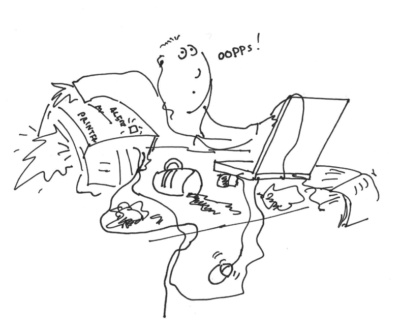
This excellent list of indicators is from the British Dyslexia Association:
If a child has several of these indications, further investigation should be made. The child may be dyslexic, or there may be other reasons. This is not a checklist.
Persisting factors:
There are many persisting factors in dyslexia, which can appear from an early age. They will still be noticeable when the dyslexic child leaves school. These include:
- Obvious ‘good’ and ‘bad’ days, for no apparent reason,
- Confusion between directional words, e.g. up/down, in/out,
- Difficulty with sequence, e.g. coloured bead sequence, later with days of the week or numbers,
- A family history of dyslexia/reading difficulties.
Pre-school:
- Has persistent jumbled phrases, e.g. ‘cobbler’s club’ for ‘toddler’s club’
- Use of substitute words e.g. ‘lampshade’ for ‘lamppost’.
- Inability to remember the label for known objects, e.g. ‘table, chair’.
- Difficulty learning nursery rhymes and rhyming words, e.g. ‘cat, mat, sat’.
- Later than expected speech development.
Pre-school non-language indicators:
- May have walked early but did not crawl – was a ‘bottom shuffler’ or ‘tummy wriggler’.
- Persistent difficulties in getting dressed efficiently and putting shoes on the correct feet.
- Enjoys being read to but shows no interest in letters or words.
- Is often accused of not listening or paying attention.
- Excessive tripping, bumping into things and falling over.
- Difficulty with catching, kicking or throwing a ball; with hopping and/or skipping.
- Difficulty with clapping a simple rhythm.
Primary school age:
- Has particular difficulty with reading and spelling.
- Puts letters and figures the wrong way round.
- Has difficulty remembering sequences, tables, alphabet, formulae etc.
- Leaves letters out of words or puts them in the wrong order.
- Still occasionally confuses ‘b’ and ‘d’ and words such as ‘no/on’.
- Still needs to use fingers or marks on paper to make simple calculations.
- Poor concentration.
- Has problems understanding what he/she has read.
- Takes longer than average to do written work.
- Problems processing language at speed.
Primary school age non-language indicators:
- Has difficulty with tying shoelaces, tie, dressing.
- Has difficulty telling left from right, order of days of the week, months of the year etc.
- Surprises you because in other ways he/she is bright and alert.
- Has a poor sense of direction and still confuses left and right.
- Lacks confidence and has a poor self-image.
Aged 12 or over:
As for primary schools, plus:
- Still reads inaccurately.
- Still has difficulties in spelling.
- Needs to have instructions and telephone numbers repeated.
- Gets ‘tied up’ using long words, e.g. ‘preliminary’, ‘philosophical’.
- Confuses places, times, dates.
- Has difficulty with planning and writing essays.
- Has difficulty processing complex language or long series of instructions at speed.
Aged 12 or over non-language indicators:
- Has poor confidence and self-esteem.
- Has areas of strength as well as weakness.
But do not despair!
With the correct, multi-sensory, explicit and supported dyslexia-friendly teaching, there is no reason why, if they are bright enough and work hard, they can’t achieve as much or more than their peers.
Take comfort from the fact that the brightest students I have taught, who have sailed through school with ease, sometimes have a major ‘crash’ at the first hurdle they come to (often at university) because they have not built up the ‘educational resilience’ to know how to handle failure.
Self-esteem
Not only that, but I have found that those dyslexic children who get through school with their self-esteem intact (because they have been supported properly) make wonderful students as they are confident, know that they have to work hard to achieve and they don’t expect everything to come easily. You should almost feel sorry for those non-dyslexic children!